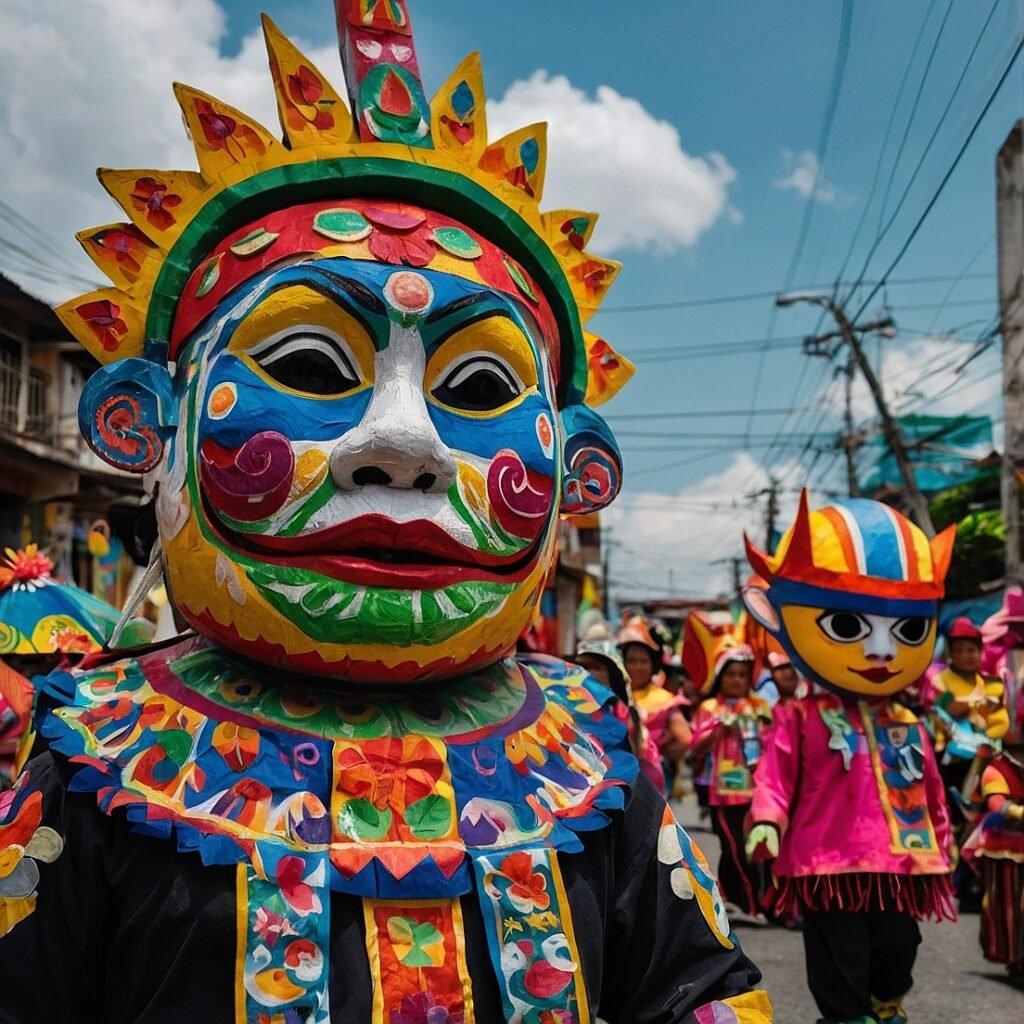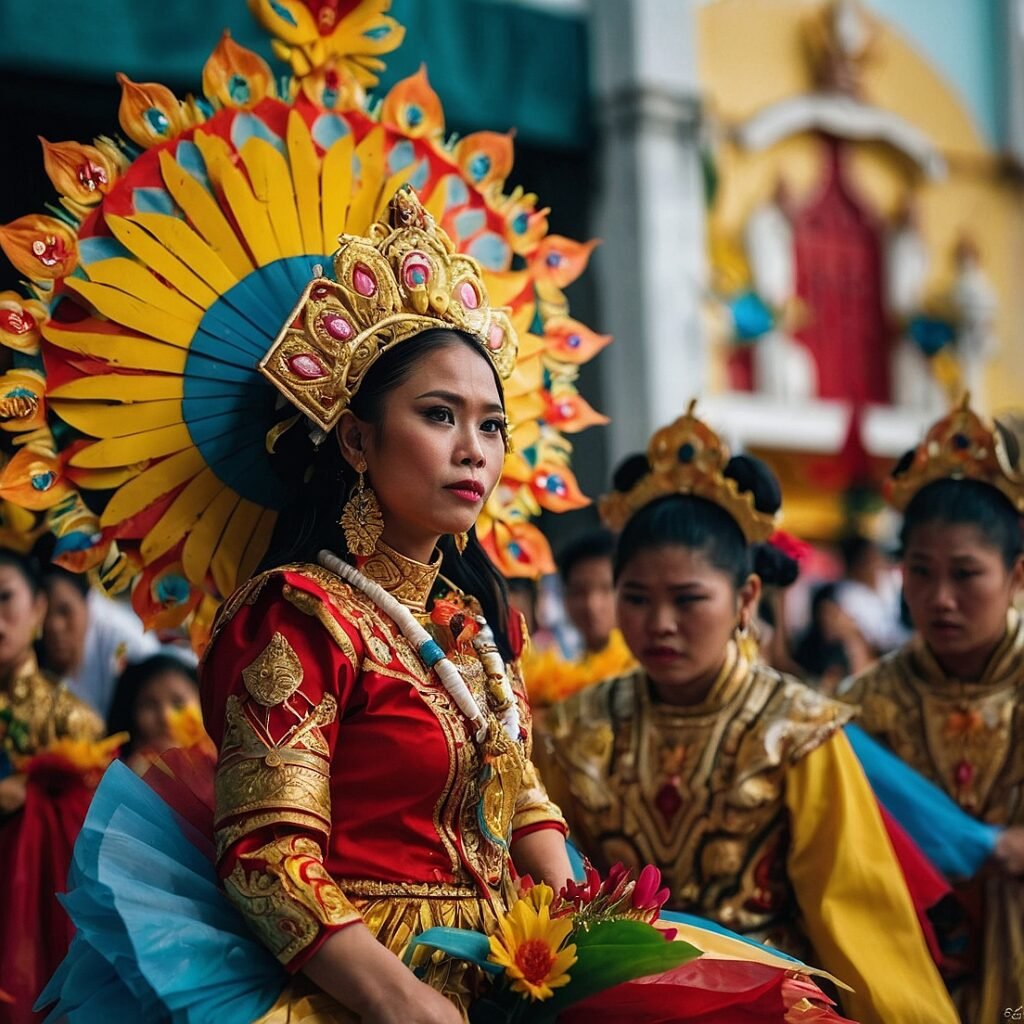Picture this: enormous, colorful figures parading down the streets, their towering forms swaying gently as they move. No, this isn’t a scene from a fantasy movie – it’s the Higantes Festival of Angono, Rizal! This incredible celebration, featuring giant paper-mâché figures, is a sight that needs to be seen to be believed. But what’s the story behind these colossal creations? Why does this small town in the Philippines burst into life with these gigantic figures every year? Buckle up, folks, because we’re about to dive into the fascinating world of the Higantes Festival!
The Origins: A Tale of Rebellion and Creativity
A Defiant Beginning
Let’s take a trip back in time, shall we? The story of the Higantes Festival begins way back in the Spanish colonial era. Now, imagine you’re a Filipino farmer working on a hacienda (that’s a large estate) owned by Spanish landlords. Life isn’t exactly a walk in the park. You’re working long hours, the pay is meager, and let’s just say your landlords aren’t winning any “Boss of the Year” awards.
So, what do you do? Well, if you’re from Angono, you get creative! The locals decided to express their frustrations in a way that was both clever and, let’s face it, pretty darn amusing. They created giant effigies of their landlords, exaggerating their features to poke fun at them. These larger-than-life figures became a symbol of the townspeople’s resilience and their ability to find humor even in tough times.
From Protest to Celebration
Now, you might be thinking, “Hold up, how did a form of protest turn into a beloved festival?” Great question! Over time, as the social and political landscape changed, so did the meaning of these giant figures. What started as a way to mock oppressors evolved into a celebration of Angono’s history, creativity, and community spirit.
The festival as we know it today began to take shape in the 1940s. The town’s artistic heritage (did you know Angono is known as the “Art Capital of the Philippines”?) played a huge role in transforming the Higantes from simple effigies into intricate, beautifully crafted works of art. The figures began to represent not just historical figures, but also mythical creatures, local characters, and even everyday townsfolk.
The Higantes: Giants Among Us
Anatomy of a Higante
Alright, let’s get up close and personal with these giants, shall we? A typical Higante stands anywhere from 10 to 12 feet tall. That’s about the height of a basketball hoop, folks! But here’s the kicker – despite their imposing size, these figures are surprisingly light. How, you ask? It’s all thanks to the magic of paper-mâché.
The process of creating a Higante is a labor of love that takes weeks, sometimes even months. It starts with a bamboo frame that forms the skeleton of the figure. This is then covered with paper-mâché, which is basically a mixture of paper pulp, glue, and water. Once the basic form is complete, it’s time for the real artistry to begin. The Higante is painted in vivid colors, often depicting traditional Filipino clothing or costumes related to the character it represents.
A Cast of Characters
Now, you might be wondering, “Who are these giant figures supposed to be?” Well, that’s where it gets really interesting! The Higantes represent a wide variety of characters, each with its own significance. Here’s a quick rundown:
- Historical figures: You might see giant versions of national heroes or important local personalities.
- Religious icons: Saints and other religious figures are common, reflecting the town’s Catholic heritage.
- Mythical creatures: Filipino folklore comes to life with figures representing various mythical beings.
- Everyday people: From farmers to fishermen, these Higantes celebrate the ordinary folks who make up the community.
- Modern characters: In recent years, some Higantes have even depicted popular cartoon characters or celebrities!
The Festival Experience: More Than Just Giants
A Feast for the Senses
Now, don’t go thinking the Higantes Festival is just about watching big figures parade around (although that’s pretty awesome on its own). Oh no, my friends, this festival is a full-on sensory experience! Let’s break it down:
- Sights: Besides the Higantes themselves, the streets are decorated with colorful banners and lights. You’ll see people in traditional Filipino costumes, and if you’re lucky, you might catch some of Angono’s famous artists at work.
- Sounds: The air is filled with music! Traditional Filipino instruments like the kulintang (a set of small gongs) and the tambuli (a horn made from carabao horn) provide a lively soundtrack to the festivities.
- Smells and Tastes: Filipino street food takes center stage here. The aroma of grilling barbecue, the sweet scent of bibingka (rice cakes), and the savory smell of longganisa (Filipino sausage) will have your mouth watering in no time.
- Touch: If you’re feeling brave, you might even get a chance to help carry one of the smaller Higantes!
The Grand Parade
The highlight of the festival is, of course, the grand parade. This usually takes place on November 22nd or 23rd, coinciding with the feast of St. Clement, the patron saint of Angono. The parade route winds through the main streets of the town, giving everyone a chance to see the Higantes in all their towering glory.
But here’s a fun fact for you: the Higantes don’t just march in a straight line. Oh no, they dance! That’s right, these giant figures sway and twirl to the music, guided by the skilled puppeteers hidden inside or behind them. It’s a sight that never fails to bring smiles and cheers from the crowd.
The Artisans: Keepers of Tradition
Masters of Their Craft
Behind every Higante is a team of skilled artisans who pour their heart and soul into these creations. Many of these craftspeople have been making Higantes for generations, passing down their techniques from parent to child. It’s not just a job for them – it’s a way of preserving their cultural heritage.
These artisans are true masters of their craft. They need to have a deep understanding of proportion and balance to create figures that are not only visually stunning but also structurally sound. After all, a Higante needs to be able to “dance” without toppling over!
A Community Effort
Here’s something that might surprise you: making a Higante isn’t a solo endeavor. It takes a village – quite literally! The creation of these giants is often a community effort, with different people contributing their skills. Some might be experts at building the frame, others might excel at paper-mâché work, and still others might be the artistic geniuses behind the painting and detailing.
This collaborative spirit is really what the Higantes Festival is all about. It brings people together, fostering a sense of community pride and shared cultural identity. In a world where so many traditions are being lost to time, it’s heartening to see a community come together like this to keep their heritage alive.
The Festival’s Impact: Beyond the Celebration
Boosting Local Tourism
Let’s talk numbers for a moment, shall we? The Higantes Festival has become a major draw for tourists, both domestic and international. Check out these stats:
| Year | Estimated Number of Visitors |
|---|---|
| 2017 | 50,000 |
| 2018 | 65,000 |
| 2019 | 80,000 |
| 2020 | Virtual celebration due to COVID-19 |
| 2021 | Limited in-person celebration |
As you can see, the festival was growing in popularity year by year before the pandemic hit. This influx of visitors has had a significant positive impact on the local economy, boosting businesses from hotels and restaurants to souvenir shops and local artisans.
Preserving Cultural Heritage
But the impact of the Higantes Festival goes beyond just economic benefits. It plays a crucial role in preserving and promoting Filipino cultural heritage. In a rapidly modernizing world, traditions like these help younger generations connect with their roots and understand their history.
The festival has also put Angono on the cultural map of the Philippines. It’s not just known as the “Art Capital” anymore – it’s also becoming famous as the home of the Higantes. This recognition has led to increased support for local artists and artisans, helping to ensure that traditional crafts and art forms continue to thrive.
The Future of Higantes: Tradition Meets Innovation
Adapting to Changing Times
Now, you might be wondering, “Can a centuries-old tradition stay relevant in the 21st century?” Well, the folks in Angono have some pretty clever ideas about that! While the core of the festival remains rooted in tradition, there have been some interesting innovations in recent years.
For example, some artisans have started experimenting with more eco-friendly materials for creating the Higantes. There’s also been a push to incorporate contemporary themes into the designs of the giants, making them more relatable to younger generations.
Going Digital
The COVID-19 pandemic forced the festival to go virtual in 2020, but this challenge also opened up new opportunities. The online celebration allowed people from all over the world to experience the Higantes Festival for the first time. Moving forward, organizers are looking at ways to maintain this global reach while still preserving the intimate, community-centered nature of the physical event.
There’s even talk of using augmented reality technology to allow people to “place” virtual Higantes in their own environments through their smartphones. How cool is that? Imagine having a 12-foot paper-mâché giant dancing in your living room!
Experiencing the Higantes Festival: Tips for Visitors
Planning Your Trip
Alright, I bet by now you’re itching to experience the Higantes Festival for yourself. Here are some tips to help you make the most of your visit:
- Timing is everything: The festival usually takes place on November 22nd or 23rd. Plan to arrive a day or two early to soak in the pre-festival atmosphere.
- Book in advance: Angono is a small town, and accommodation can fill up quickly during the festival. Make your reservations early!
- Dress comfortably: You’ll be doing a lot of walking and standing. Comfortable shoes are a must!
- Bring a camera: Trust me, you’re going to want to capture these amazing sights.
- Try the local food: Don’t leave without sampling some of Angono’s culinary specialties.
Respecting Local Customs
Remember, while the Higantes Festival is a joyous celebration, it’s also an important cultural event for the people of Angono. Here are a few things to keep in mind:
- Be respectful when taking photos, especially of the Higantes and the people carrying them.
- If you’re invited to participate in any activities, don’t be shy! Joining in is a great way to connect with the local culture.
- Learn a few basic Filipino phrases. Even a simple “Salamat” (thank you) can go a long way in showing your appreciation.
A Celebration of Art, History, and Community
As we wrap up our journey through the world of the Higantes Festival, I hope you’ve gotten a sense of just how special this celebration is. It’s more than just a parade of giant figures – it’s a living, breathing piece of Filipino cultural heritage. It’s a testament to the creativity, resilience, and community spirit of the people of Angono.
From its roots as a form of protest against colonial oppression to its current status as a beloved cultural event, the Higantes Festival has come a long way. Yet at its heart, it remains true to its origins – a celebration of the human spirit, expressed through art and community.
So, whether you’re a culture enthusiast, an art lover, or just someone who enjoys a good party, the Higantes Festival has something for you. It’s a chance to step into a world where giants walk the streets, where history comes alive, and where a small town’s big heart is on full display for all to see.
Who knows? Maybe next November, you’ll find yourself in Angono, looking up in awe as a 12-foot paper-mâché giant dances by. And in that moment, you’ll understand why the Higantes Festival isn’t just a local celebration – it’s a national treasure.
Disclaimer: While every effort has been made to ensure the accuracy of the information presented in this blog post, please note that some details may have changed since the time of writing. The COVID-19 pandemic has affected many cultural events worldwide, and the Higantes Festival may have undergone changes in recent years. We encourage readers to check the latest updates from official sources when planning their visit. If you notice any inaccuracies in this post, please report them so we can correct them promptly.




